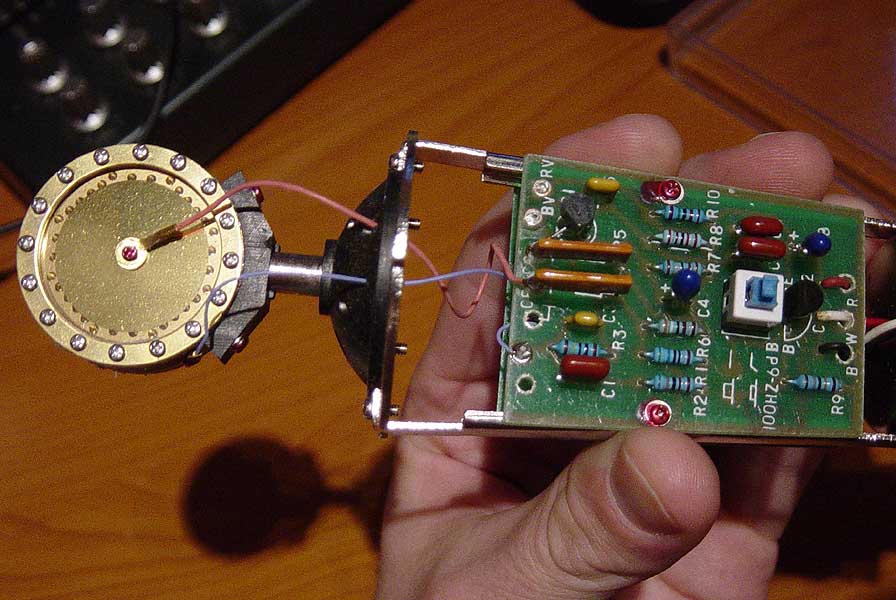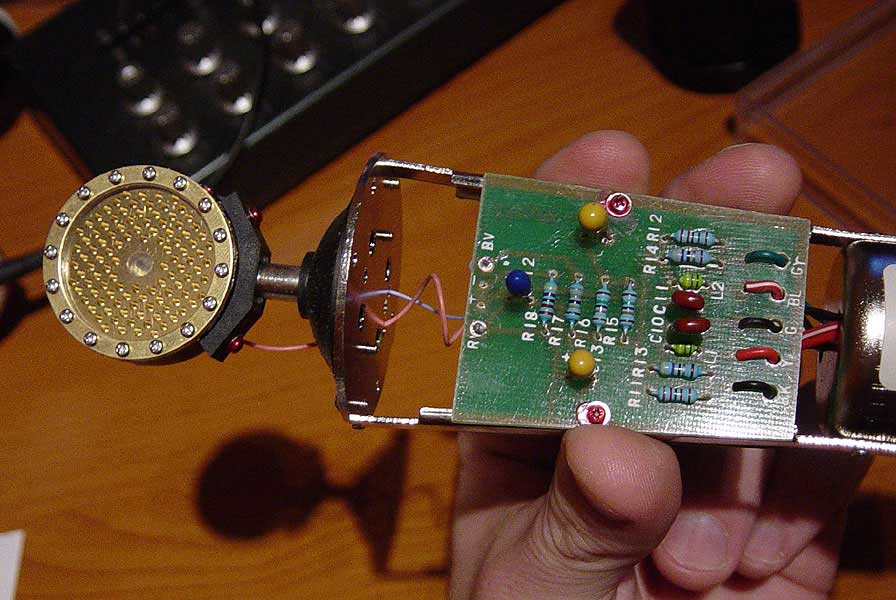Hello.
I found a zillion posts regarding this process, but I can not locate the two .22nF caps in my mic that usually are replaced as a first mod. My mic is a chinese made TSM MT87, mostly marketed in Scandinavia. Diaphragm measures 32mm, and there are 16 screws (?!) both sides holding the frame. The mic looks very close to a more popular chinese I saw a picture of somewhere, but don't remember which one.

I can locate the "Gate" cap (C2), 1000pF ceramic, and I'm going to replace it with a polystyren one, if available. I cannot locate the other two. The schematic is a fastly drawn one, haven't had time to draw it clean on a computer yet. I hope you hawk-eyed pros can make some out of it.
The gate cap is marked with circle in this schematic:

The ones I suppose are the ones to be replaced are circled here. They read "330I".

The ones marked at the lower schematic would be the red/brown ones at the back of the mic:

Also, I was wondering if I should try removing the inner layer of metal wire net that is protecting the diaphragm, to get a bit more open sounding mic. The outer and inner wire nets are the same thickness, and between them there is a tighter, thinner one. Would it do any good to remove the inner thicker one?
Thank You very much if there is any help you can give me!
-Aki.
I found a zillion posts regarding this process, but I can not locate the two .22nF caps in my mic that usually are replaced as a first mod. My mic is a chinese made TSM MT87, mostly marketed in Scandinavia. Diaphragm measures 32mm, and there are 16 screws (?!) both sides holding the frame. The mic looks very close to a more popular chinese I saw a picture of somewhere, but don't remember which one.

I can locate the "Gate" cap (C2), 1000pF ceramic, and I'm going to replace it with a polystyren one, if available. I cannot locate the other two. The schematic is a fastly drawn one, haven't had time to draw it clean on a computer yet. I hope you hawk-eyed pros can make some out of it.
The gate cap is marked with circle in this schematic:

The ones I suppose are the ones to be replaced are circled here. They read "330I".

The ones marked at the lower schematic would be the red/brown ones at the back of the mic:

Also, I was wondering if I should try removing the inner layer of metal wire net that is protecting the diaphragm, to get a bit more open sounding mic. The outer and inner wire nets are the same thickness, and between them there is a tighter, thinner one. Would it do any good to remove the inner thicker one?
Thank You very much if there is any help you can give me!
-Aki.



































